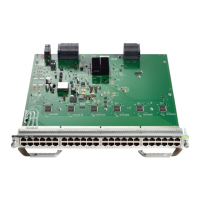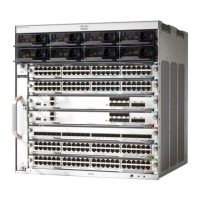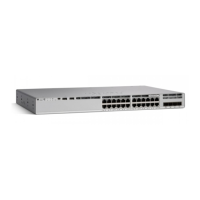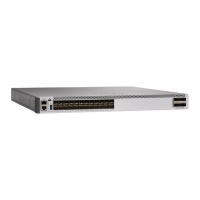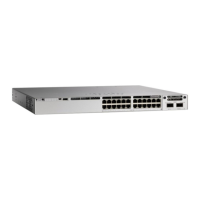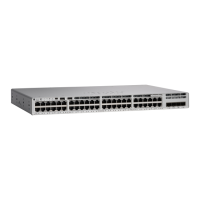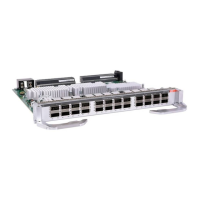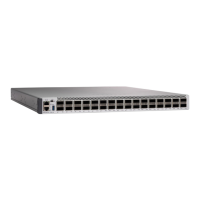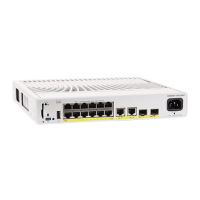• Connected to CSSM Through CSLU:
• For product instance-initiatied communication), enter the license smart sync command in privileged
EXEC mode. The synchronization request causes CSLU to push the missing information (a policy
or authurization code) to the product instance.
• For CSLU-initiated communication, complete this task: Collecting Usage Reports: CSLU Initiated,
on page 141. This causes CSLU to detect and re-furnish the missing policy in an ACK response.
• CSLU Disconnected from CSSM:
• For product instance-initiatied communication), enter the license smart sync command in privileged
EXEC mode. The synchronization request causes CSLU to push the missing information (a policy
or authurization code) to the product instance. Then complete these tasks in the given order:Download
All For Cisco (CSLU Interface), on page 142 > Uploading Usage Data to CSSM and Downloading
an ACK, on page 159 > Upload From Cisco (CSLU Interface), on page 143.
• For CSLU-initiated communication, complete this task: Collecting Usage Reports: CSLU Initiated,
on page 141. This causes CSLU to detect and re-furnish the missing policy in an ACK response.
Then complete these tasks in the given order: Download All For Cisco (CSLU Interface), on page
142 > Uploading Usage Data to CSSM and Downloading an ACK, on page 159 > Upload From Cisco
(CSLU Interface), on page 143.
• No Connectivity to CSSM and No CSLU
If you are in an entirely air-gapped network, from a workstation that has connectivity to the internet and
CSSM complete this task: Downloading a Policy File from CSSM, on page 159.
Then complete this task on the product instance: Installing a File on the Product Instance, on page 160.
----------------------------------------------------------------------------------------------------
----------------------------------------------------------------------------------------------------
Error Message %SMART_LIC-3-TRUST_CODE_INSTALL_FAILED: The install of a new licensing
trust code has failed on [chars]: [chars].
Explanation: Trust code installation has failed. The first [chars] is the UDI where trust code installation was
attempted. The second [chars] is the error string with details of the failure.
Possible reasons for failure include:
• A trust code is already installed: Trust codes are node-locked to the UDI of the product instance. If the
UDI is already registered, and you try to install another one, installation fails.
• Smart Account-Virtual Account mismatch: This means the Smart Account or Virtual Account (for which
the token ID was generated) does not include the product instance on which you installed the trust code.
The token generated in CSSM, applies at the Smart Account or Virtual Account level and applies only
to all product instances in that account.
• A signature mismatch: This means that the system clock is not accurate.
• Timestamp mismatch: This means the product instance time is not synchronized with CSSM, and can
cause installation to fail.
Recommended Action:
System Management Configuration Guide, Cisco IOS XE Bengaluru 17.4.x (Catalyst 9400 Switches)
172
Smart Licensing Using Policy
System Messages
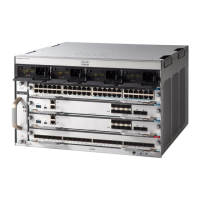
